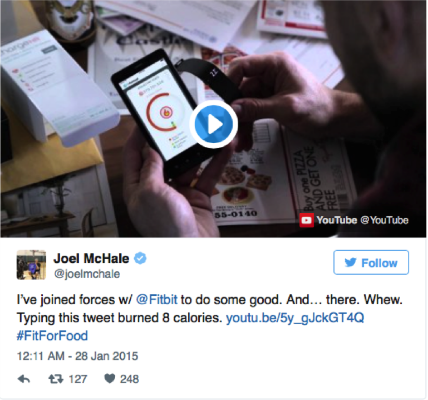William Bernbach, creator of the groundbreaking Volkswagen “Lemon” campaign, claimed, “Word of mouth is the best medium of all.” And turns out he wasn’t far off. Nielsen research revealed that a whopping 92% of consumers trust referrals from family or friends more than any other type of advertising or referral. But if your reputation lies in the hands of consumer reviews, how can marketers get a word in edgewise? Luckily, new findings in lead generation and inbound marketing techniques are helping to eliminate the gap between corporate and consumer conversations. Interested in leveraging consumer goodwill and positive feedback? Read on…
1. Use Subtle Calls To Action
Many marketers and entrepreneurs make the vital mistake of believing that word of mouth marketing happens by accident, causing them to miss out on potentially profitable and loyal leads. In fact, McKinsey research indicates 20% to 50% of purchases are the result of word-of-mouth recommendations. Satisfied customers make the best marketers.
Using understated, conversational Calls To Action (CTA) throughout the customer journey facilitates discussions between customers. “Did you love your experience with us? Tell a friend!” Activity tracker Fitbit nearly went out of business 7 times, but now commands US$745.3 million in annual sales. How? By gamifying their unique selling points through word of mouth marketing on social media platforms. Making fitness achievements instantly sharable allows people to encourage each other and even engage in a little healthy competition - while spreading the word about Fitbit, of course.
2. Reach Out To Industry Influencers
Savvy marketers are capitalizing on the important correlation between generating content and generating sales. In some cases this means bringing in the big guns - and by big guns, we mean the big influencers. Adidas dramatically increased word-of-mouth (WOM) marketing for the Chinese Olympic team by introducing a campaign focused around influencer athletes. This multi-channel promotion involved viral interviews with specific players, blog content, outdoor advertising featuring basketball player Sui Feifei and crowdsourcing unique “chants” – which not only boosted national pride, but also evened the playing field between arch rivals Adidas and Nike.
3. Offer Big Incentives For Referrals
To fuel the tide of positive reviews and feedback, many marketers are looking to implement structured referral programs – especially since referred customers have a 37% higher retention rate. Surrounding promotions with attention grabbing content motivates customers’ participation and converts them into ambassadors for your brand. Airbnb’s enticing referral programme offers travel credits towards future reservations for users who spread the virtual word with simple and appealing proposition: spend less on your next holiday by simply inviting your friends... Who wouldn’t be game?
4. Never lose touch
As technology develops at lightning speed, keeping in touch with customers through innovative email marketing campaigns allows you to reach out to your customers personally, without taking up too much of their time. However, playing this strategy effectively is all about what you say and how you say it. Encourage your fan base to share reviews, experiences and even photos to build a virtual community of supporters.
Fear Of Missing Out (FOMO) is always a powerful motive. Beauty product subscription service Birchbox coyly lures their customers into clicking on the email labled “We forgot Something in Your February Box!” Of course they didn’t, but missing out on this “unique offer” may encourage fashion-savy customers to take a second glance at this email.
5. Get On The Good Side of User-generated Content
WOM marketing works because it’s completely geared towards customer satisfaction. You won’t see any pushy-techy business language – just straight-talking, conversational bites. Marketers are seeing the most effecive conversions through positive recommendations, as research shows 88% of people trust online reviews written by other consumers as much as they trust recommendations from personal contacts. Therefore the important question is: do you know what your customers are saying about you?
Outbound marketing is quickly on the way out, with 94% of customers skipping pre-roll videos and obtrusive pop-up ads. Instead, they’re turning to trusted bloggers – real people talking in real time is the next best thing to a friend’s recommendation. For example, Hong Kong restaurant review site Open Rice has capitalised on the enthusiasm of the city’s snap-happy foodie bloggers, and is widely recognised as the go-to source for Hong Kong dining reviews.
Take the time to monitor and analyze your consumer feedback, and you’ll be well on the way to developing a solid WOM marketing programme that guides customer conversations, generates positive reviews and creates loyal followers for your brand.






